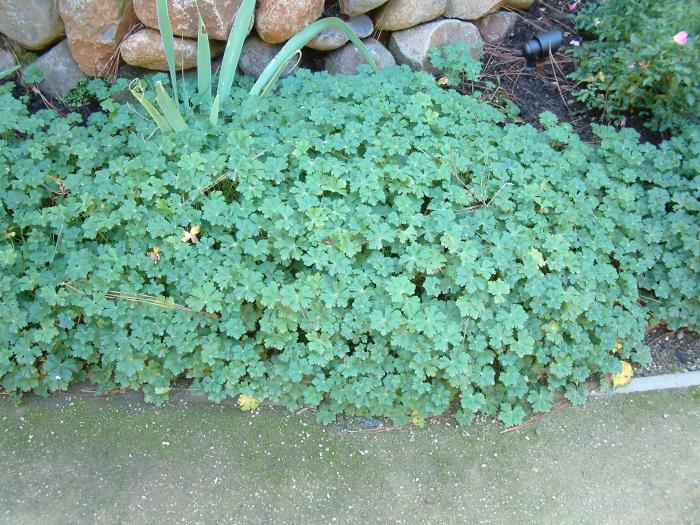| Botanical Name: Geranium x cantabrigiense 'Biokovo' | |
| Common Name: Biokovo Cranesbill |

-
Anatomy
-
Culture
-
Design
Plant Type
Ground cover, Perennial
Height Range
Under 1'
Flower Color
Pink, White
Flower Season
Spring, Summer, Intermittent
Leaf Color
Dark Green
Bark Color
n/a
Fruit Color
n/a
Fruit Season
n/a
Sun
Full, Half
Water
Low, Medium
Growth Rate
Moderate
Soil Type
Sandy, Clay, Loam, Rocky, Unparticular
Soil Condition
Average, Rich, Poor, Well-drained, Dry
Soil pH
Neutral
Adverse Factors
n/a
Design Styles
English Cottage, Meadow, Mediterranean, Ranch, Spanish
Accenting Features
Fall Color, Showy Flowers, Unusual Foliage
Seasonal Interest
Spring, Summer, Fall
Location Uses
Entry, Perennial Border, Shrub Border, Foundation, Parking Strip, Patio, Walls / Fences, Walkways, With Rocks
Special Uses
Erosion Control, Mass Planting, Small Spaces
Attracts Wildlife
n/a
Information by: Stephanie Duer
Photographer: GardenSoft
Photographer: GardenSoft
-
Description
-
Notes
This little cranesbill is ideally suited to rock gardens, edges of borders, or along paths. The nearly evergreen leaves are glossy green, rounded, with slight lobes. Flowers are white flushed with pink and pink margins. Blooms over most of the summer. Grows 6 to 8 inches tall, with a spread of up to 30 inches or more. Though spreading, it isn't aggressive. A perfectly well behaved perennial.
Grow in well drained soil of nearly any type, in full sun to part shade. It can be sheared back after flowering to give it a tidier appearance, but it isn't necessary. The best time to cut back the foliage is in late winter to early spring, before new foliage emerges. Perennial geraniums, the true geranium, are not related to the fun-loving, annual plant commonly called "geranium" - those are pelargoniums.